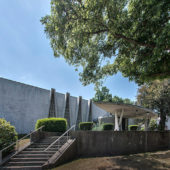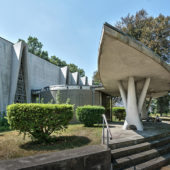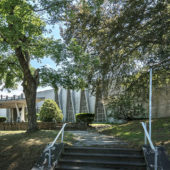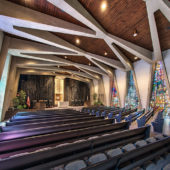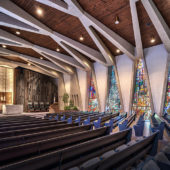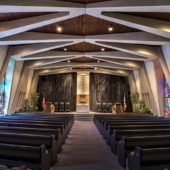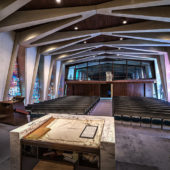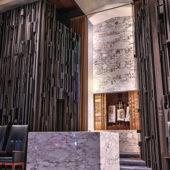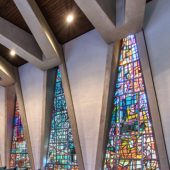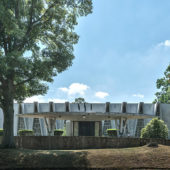A striking example of mid-century modern architecture.
Solomon Treitel, the first Jewish resident of Woonsocket opened a clothing store there in 1866. By 1894 there were thirty eight Jewish residents and they held their first services in 1889. The congregation first rented space. In 1904 the congregation purchased a Presbyterian church which served as B’nai Israel’s home for 58 years. By 1959 there were about 200 Jewish families in Woonsocket and a new building in a more up-to-date part of town was planned.
Numerous prestigious architects were considered for the new synagogue. Percival Goodman, who designed far more American synagogues than any other architect, was interviewed. However, because Goodman had designed three other synagogues in the area the building committee, wanting a new approach, decided against him.
Samuel Glaser, a Boston architect, had recently completed a synagogue in Newton, Massachusetts for a congregation of 530 families. Glaser was born in Latvia, coming to the USA when he was very young. His exceptional talent was evident early. After graduating from Brookline High School, in nearby Brookline MA, he completed the rigorous five-year architecture program at MIT (Massachusetts Institute of Technology) in 1925.
The building committee was impressed by Glaser’s talent and command of construction details. He was hired and ground was broken for the new synagogue on June 19, 1960. A focal point of the entrance is the porte-cochere which is shaped as a symbolic metaphor for the eye of God. A Star of David is implanted in the canopy. The striking stained glass windows were designed by Holocaust survivor Avigdor Arikha, a Romanian born French-Israeli artist. Two fine woven textiles were contributed to B’nai Israel by Anni Albers wife of famous graphic artist Josef Albers. She designed the parochet (curtain) that covers the ark in B’nai Israel’s sanctuary.

